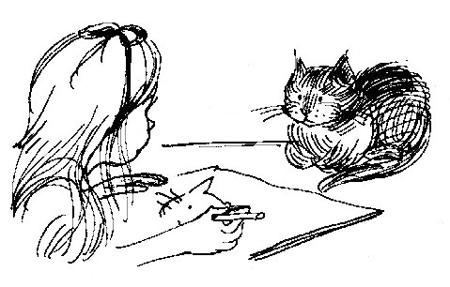|


Many of the activities on these pages may require adult supervision.
Be sure to tell a grown-up about what you're planning and ask for permission before getting started.
It's your own ideas that count.
The main thing to remember when you're drawing and painting is to use your own mind and not someone else's. Sometimes kids in art class feel a little insecure, so they look around to see what others in the class are doing.
Not that they intend to copy, but maybe, they think, if they did something the same, then they wouldn't be embarrassed later on, when the teacher held up the pictures or posted them on the bulletin board.

Well, this kind of thinking is all wrong. It stymies, rather than frees the mind. The whole point about art is communication, and if you don't draw what you see and feel, you may as well not draw at all.
Just relax. Let your imagination go where it wants to go. Don't think, What if I do this? What if I do that?
Just do it. Younger children are better at painting their feelings than older children. Around the ages of nine or ten, children want so much to draw and paint realistically that they often give up art out of frustration.
Younger children seem not to care so much for realism, but older kids insist on it. These olders kids should be given good drawing instruction by a teacher. If this is not possible, there are two very good books about drawing: The Natural Way to Draw by Kimon Nicolaïdes and Drawing on the Right Side of the Brain by Betty Edwards. Both books are written for adults, but motivated kids can use them.
Click here for SCULPTURE
Click here for MORE IDEAS!
|

